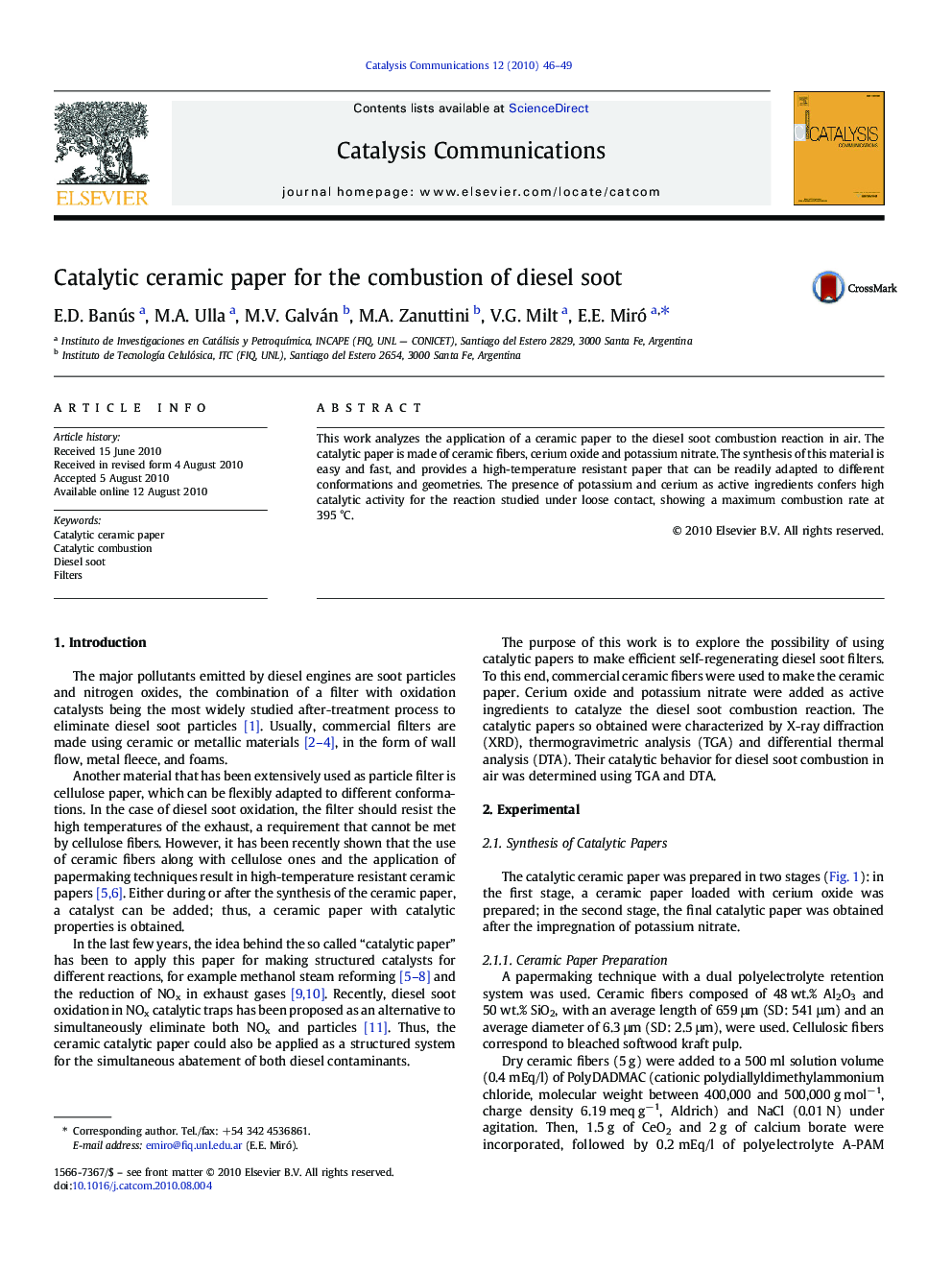| Article ID | Journal | Published Year | Pages | File Type |
|---|---|---|---|---|
| 51362 | Catalysis Communications | 2010 | 4 Pages |
This work analyzes the application of a ceramic paper to the diesel soot combustion reaction in air. The catalytic paper is made of ceramic fibers, cerium oxide and potassium nitrate. The synthesis of this material is easy and fast, and provides a high-temperature resistant paper that can be readily adapted to different conformations and geometries. The presence of potassium and cerium as active ingredients confers high catalytic activity for the reaction studied under loose contact, showing a maximum combustion rate at 395 °C.
Graphical AbstractThe catalytic paper is made of ceramic fibers, cerium oxide and potassium nitrate. The synthesis of this material is easy and fast, and provides a high-temperature resistant paper that can be readily adapted to different conformations and geometries. The presence of potassium and cerium as active ingredients confers high catalytic activity for the soot combustion reaction under loose contact, showing a maximum combustion rate at 395 °C. The figures show pictures of the catalytic ceramic paper (a) and the catalytic ceramic paper impregnated with soot (b). The scheme shows a summary of the preparation method.Figure optionsDownload full-size imageDownload as PowerPoint slideResearch Highlights► The catalytic paper is made of ceramic fibers, cerium oxide and potassium nitrate. ► The synthesis of this material is easy and fast, and provides a high-temperature resistant paper that can be readily adapted to different conformations and geometries. ► The presence of potassium and cerium as active ingredients confers high catalytic activity for the soot combustion reaction under loose contact, showing a maximum combustion rate at 395 °C.
